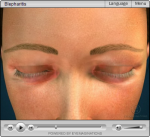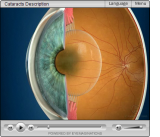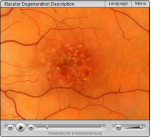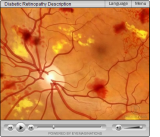Posts by Brandon Mayo
Anterior Uveitis
images/mp3/anterior.mp3 Anterior uveitis is an inflammation of the middle layer of the eye, which includes the iris (colored part of the eye) and adjacent tissue, known as the ciliary body. If untreated, it can cause permanent damage and loss of vision from the development of glaucoma, cataract or retinal edema. It usually responds well to…
Read MoreBlepharitis
Blepharitis is defined as inflammation of the eyelids and eyelashes. Symptoms include red, irritated, itchy eyelids. You may even notice crusting around the eyelashes that resembles dandruff. It is a very common problem that can be caused by bacterial infections, certain skin conditions like acne rosacea, and demodex infestation. While blepharitis is generally not considered…
Read MoreCataract
A cataract is a cloudy or opaque area in the normally clear lens of the eye. Depending on its size and location, it can interfere with normal vision. Most cataracts develop in persons over age 55, but they occasionally occur in infants and young children. Usually people develop cataracts in both eyes, but one eye…
Read MoreMacular Degeneration
View Video Macular degeneration is the leading cause of blindness in America. It results from changes to the macula, a portion of the retina that is responsible for clear, sharp vision, and is located at the back of the eye. Most people with macular degeneration have the dry form, for which there is…
Read MoreDiabetic Retinopathy
Diabetes is a disease that interferes with the body’s ability to use and store sugar and can cause many health problems. One, called diabetic retinopathy, can weaken and cause changes in the small blood vessels that nourish your eye’s retina, the delicate, light sensitive lining of the back of the eye. These blood vessels may…
Read MoreGlaucoma
Glaucoma is an eye disease in which the internal pressure in your eyes increases enough to damage the nerve fibers in your optic nerve and cause vision loss. The increase in pressure happens when the passages that normally allow fluid in your eyes to drain become clogged or blocked. The reasons that the passages become…
Read MoreRetinoblastoma
images/mp3/retinoblastoma.mp3 Every parent dreads to hear the word “cancer,” but cancer has a high prevalence in the United States. Early detection of cancer can greatly reduce the severity of the illness and increase life expectancy. Optometrists diagnose, refer, and comanage cancers that involve the eye area. The most common cancer involving the eye in young…
Read MoreAcanthamoeba
Acanthamoeba is one of the most ubiquitous organisms in the environment, but rarely causes infections. When infection does occur, however, it can be extremely serious and vision threatening. Recently, there have been multiple reports of increasing incidence of Acanthamoeba keratitis. Co-infection with a bacterial keratitis is common both in the contact lens case and on…
Read MoreEye Coordination
Eye coordination is the ability of both eyes to work together as a team. Each of your eyes sees a slightly different image and your brain, by a process called fusion, blends these two images into one three-dimensional picture. Good eye coordination keeps the eyes in proper alignment. Eye coordination is a skill that must…
Read MoreColor Deficiency
images/mp3/color_def.mp3 Color vision deficiency means that your ability to distinguish some colors and shades is less than normal. It occurs when the color-sensitive cone cells in your eyes do not properly pick up or send the proper color signals to your brain. About eight percent of men and one percent of women are color deficient.…
Read More



